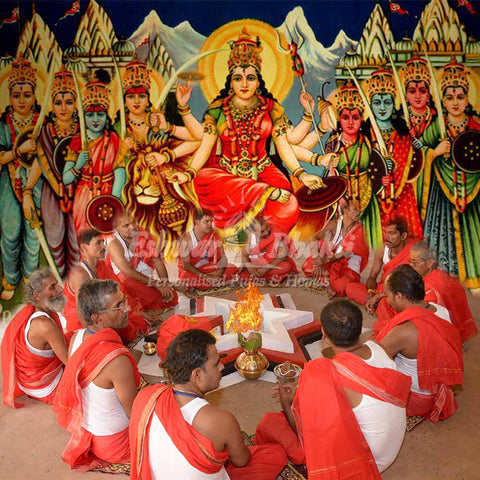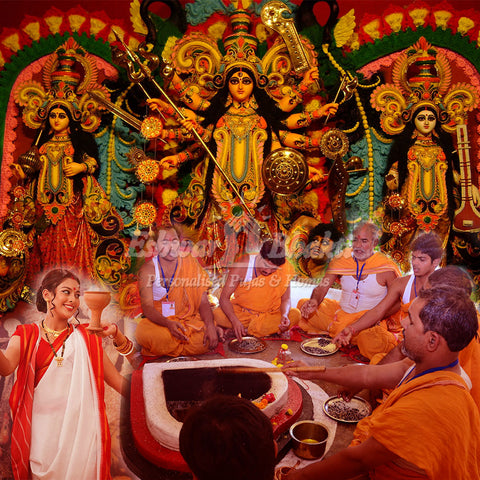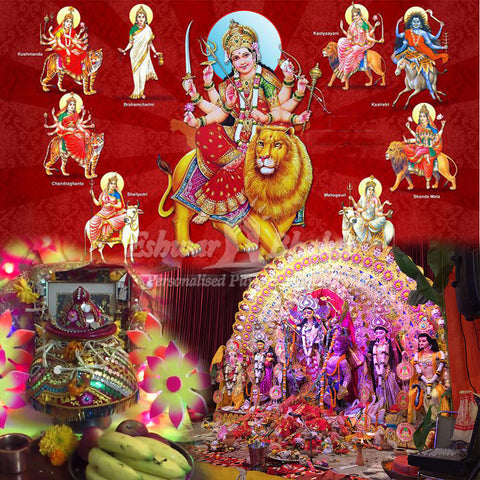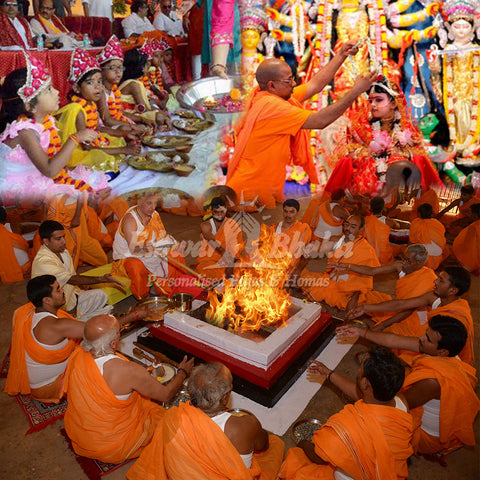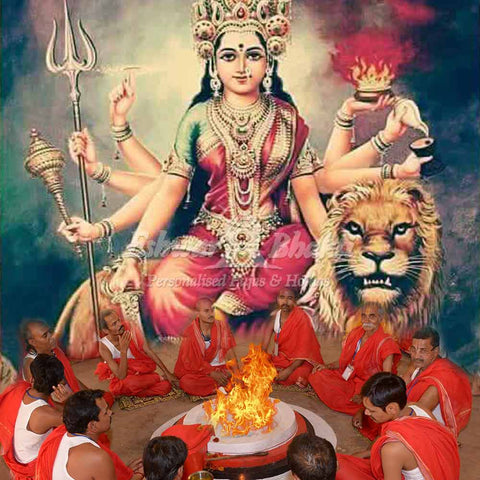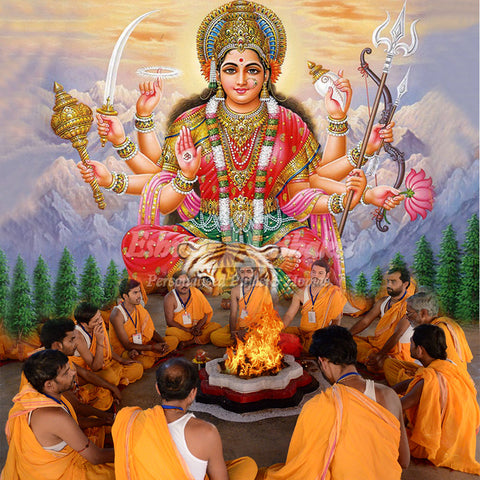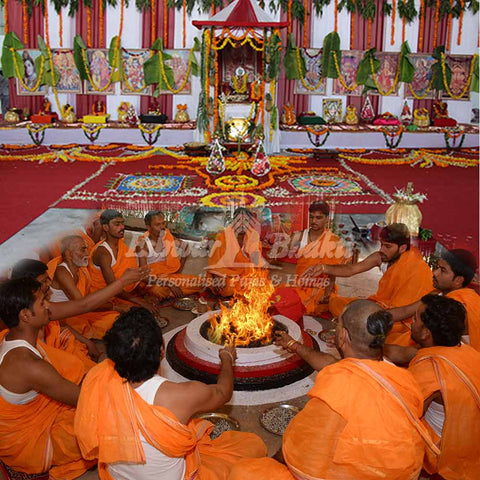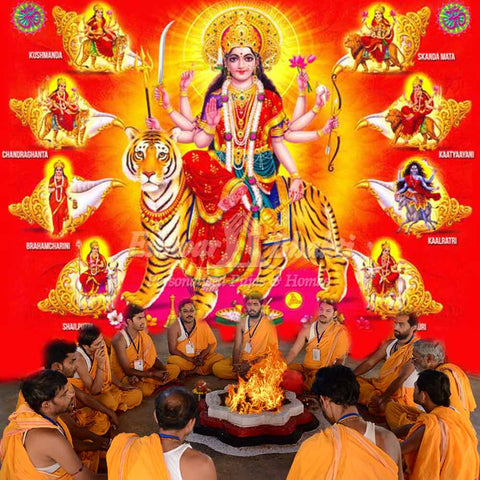Navratri festival
The word Navratri is derived from two words; "Nav" means Nine (9) and "Ratri" means Night. Navratri is the most awaited and widely celebrated Hindu festival, which starts on the very first day of Hindu calendar month, Ashviin (which usually comes in the month of September/October) and held in honour of divine feminine. And it is celebrated for nine days before the Dussehra (which is the 10th Day). The tenth day is celebrated as the good over evil (there's a story behind it, keep reading this article). Navratri is also called Navaratri. Do you know that Navratri can occur several times in the year? Yes, Navratri occurs four times in a year, but Sharad Navratri is considered as the most significant and it is widely celebrated (which mostly arrive in the autumn season, i.e., September or October).

Out of the other three Navratris, one is celebrated in Hindu month, Chaitra , which falls in March-April. It also symbolizes the beginning of Hindu New Year. Agni Purana, states that the Chaitra Navratri acts like the jaws of Lord Yamaraj. By worshipping Mother Goddess, on this Navratri, one is protected from the disfavor of Lord Yamaraj. Chaitra Navratri puja also acts as a shield from pitra dosh. Navratri pujas have the potency to nullify any affliction caused by any planet and bestows with Riddhi & Siddhi. The cosmic activity/Prana Shakti in the universe is at the highest during Navratri.
And the rest two are called as Gupta Navratri and is usually not known the common people. Gupt Navaratri is also known as Gayatri Navratri. Gupt Navratri is legendary for all tantrik pujas. Puja during Gupt Navratri delights Mother Durga and showers Her blessings in variety of wealth, knowledge, affluence and constructive energies. It is known only to selected few people and those who worship her during this time are highly rewarded.
This festival is celebrated in several ways in various regions of India. Some people celebrate this festival as triumphs of good over the evil (Durga's victory over Mahishasura), and some people celebrate it as the victory of Lord Rama over the devil Ravana. Most North Indians celebrate this festival as the victory of Lord Rama over the devil Ravana through plays (character-based acting) which they name it as Ram Lila. And on the final day, they burn the Ravana idol which is stuffed with some fireworks/crackers and celebrate it.
It for these nine days the Goddess descends on earth to be among her devotees. During these nine nights festival, the three forms of the goddess - Durga, Lakshmi and Saraswathi - are invoked. Maa Durga is worshipped in Her different incarnations for ten days and nine nights during the festival. It is the most auspicious and powerful period to perform devotional sadhanas and pray to Goddess Durga.
Well, we all know the ancient story of the Ramayana, but now let's discuss how the Goddesses Durga defeated Mahishasura? This victory is the main reason this Nine days festival is celebrated.
This legendary festival is celebrated to mark the victory of Goddesses Durga, who fought against the buffalo headed demon, Mahishasura. Coming to the history, Mahishasura devoted several years in doing Sadhana (intense meditation and spiritual discipline) of Lord Brahma. Lord Brahma got pleased with his devotion and granted him boon of immortality, but Lord Brahma had put a condition that only a woman can defeat him. Blessed with such a massive power of immortality, this evil-minded demon started attacking the Triloka (Earth, Heaven and Hell). He had created a violent situation in entire Triloka, and none of the Gods were able to stand against him, as only a woman could defeat him. Then, the gods prayed to the trinity of Gods (Lord Shiva, Lord Brahma and Lord Vishnu), to kill this evil demon. All the three gods came together and decided to create a feminine energy to demolish Mahishasura. With their combined powers, mother Durga (Shakti) incarnated.
Later, Goddess Shakti (Durga) fought with the Mahishasura for ten days to save the Triloka (earth, heaven, and hell). On the 10th Day, Mahishasura had transformed into a buffalo, and Goddess Durga attacked the Mahishasura with her weapon (Trishul) and defeated the evil. That's the reason, Dussehra is celebrated on the 10th Day of the Ashvin month.
During the Navratri season, nine different avatars of Shakti are worshipped on nine days. Each day a different avatar of Goddess Durga is honoured. Here are the nine incarnations of Goddess Durga:
Day 1: Goddess Shailputri
Day 2: Goddess Brahmacharini
Day 3: Goddess Chandraghanta
Day 4: Goddess Kushmanda
Day 5: Goddess Skandamata
Day 6: Goddess Katyayani
Day 7: Goddess Kaalratri
Day 8: Goddess Mahagauri
Day 9: Goddess Siddhidatri
How do people celebrate the Navratri Festival?
There are several methods followed by different regions of India. Navratri is celebrated by Indian people with great devotion and energy for ten days. Most people worship the idol of Goddess Durga, followed by fasting (only eating vegetarian food and fruits) and perform several activities like Garba and Dandiya. They start the prayer by worshipping Lord Ganesha and then start praying and worshipping Goddess Durga Devi. People pray to Goddess Durga Devi for protection and strength to fight against the problems and evil that occurs in their life. Some people even sacrifice animals for the Goddess (very few places).
People of Gujarat state celebrate this festival in an exquisite way, and they enjoy a lot during this festive season. Each person is well dressed in a traditional way, and they perform prayers and worship Goddess Durga for ten days. They perform Garba and Dandiya (it is played with two sticks holding in their hands) after the prayers. Overall, they celebrate this festival with enthusiasm and devotion.
Ten days of prayer, meditation and chanting during this festive season help us to connect with our soul and fill devotees with positivity and peace. Let's celebrate every Navratri with devotion, enthusiasm, and positivity.




